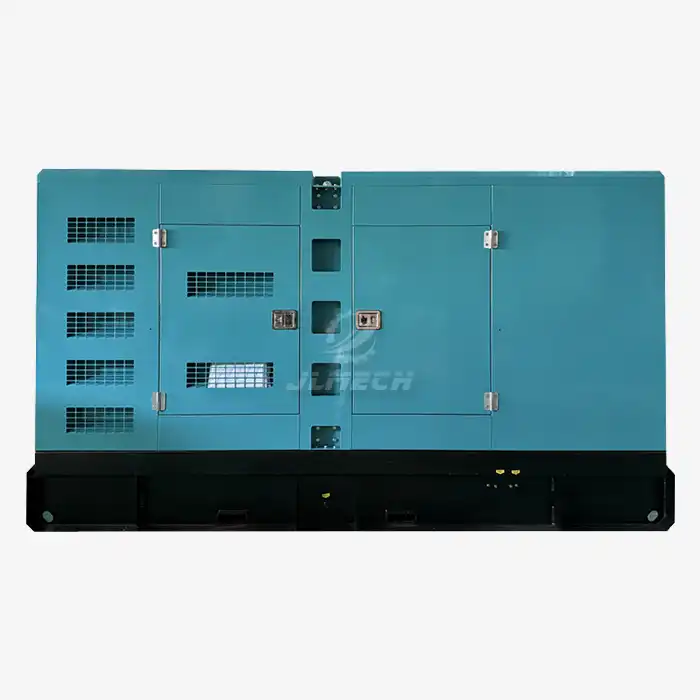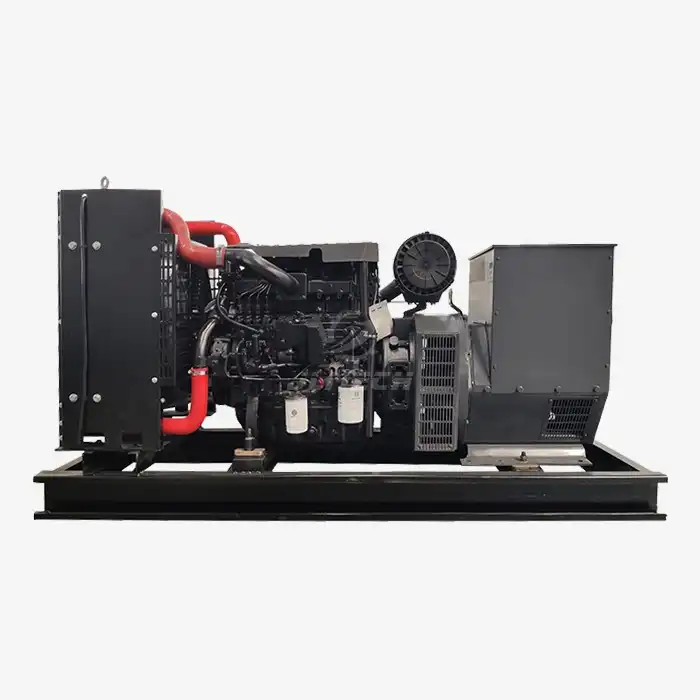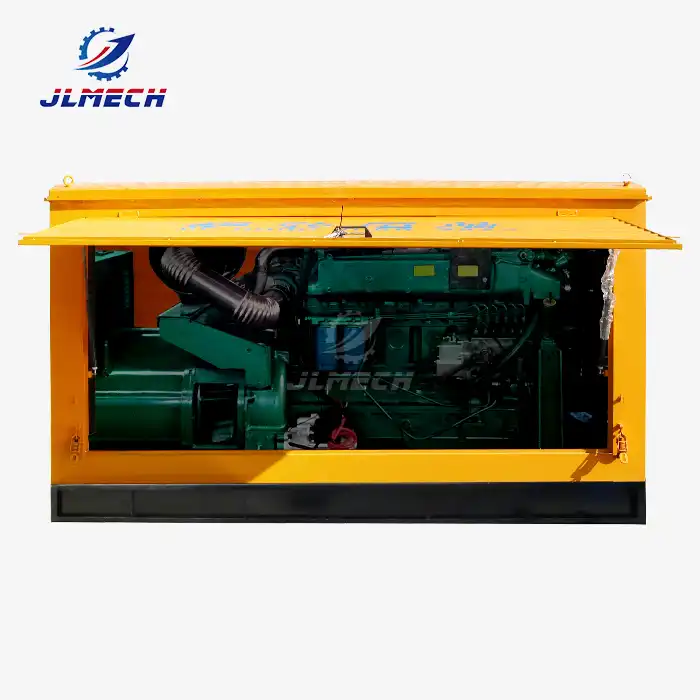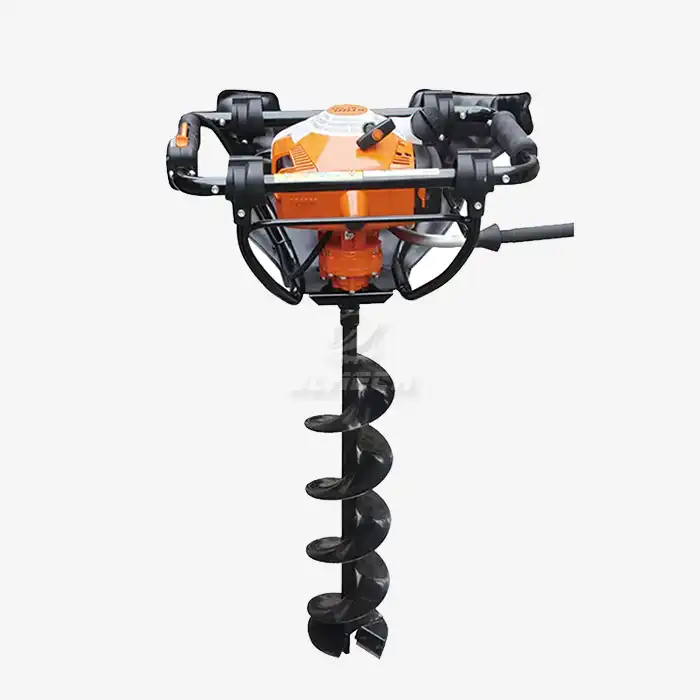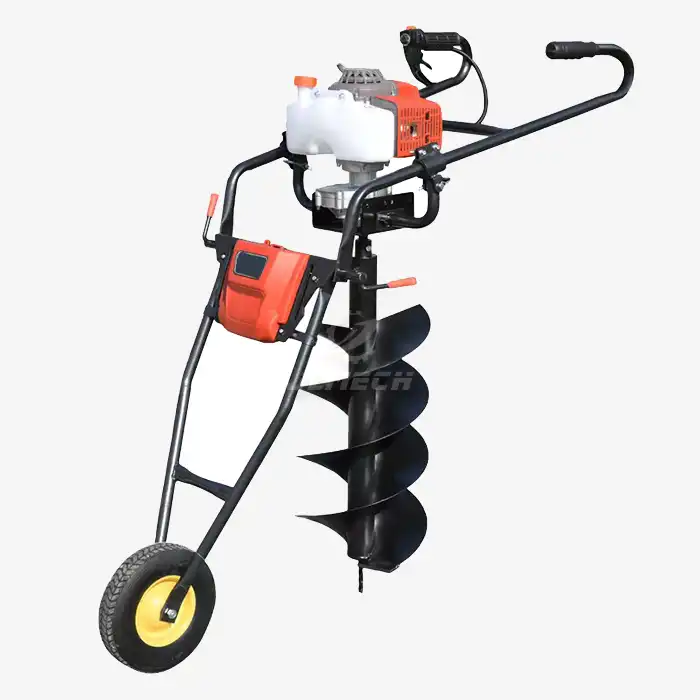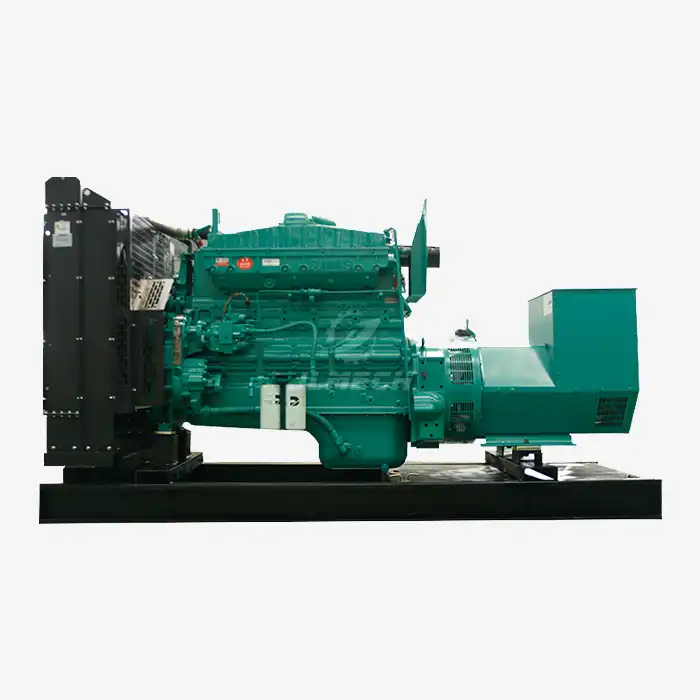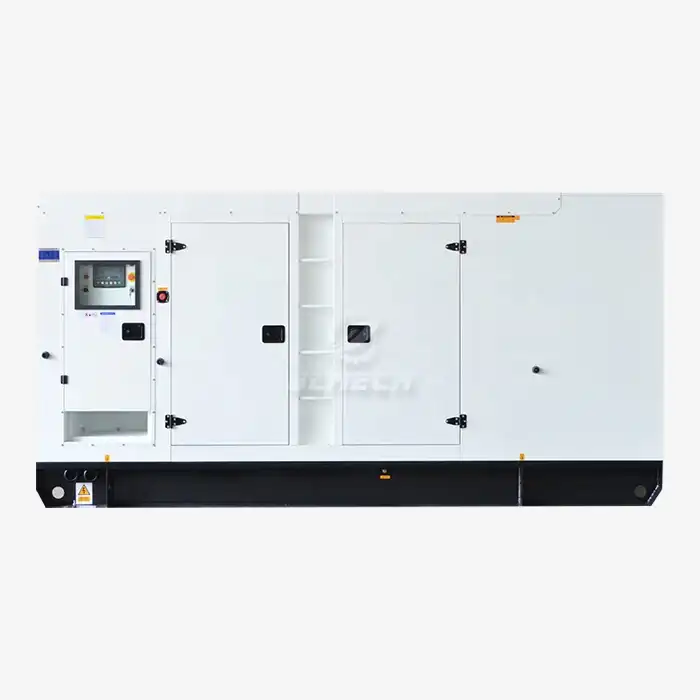The water-cooled system circulates coolant through the engine block, absorbing heat as it flows. This heated liquid then passes through a radiator, where it releases the absorbed heat to the surrounding air. The cooled liquid returns to the engine, repeating the cycle. This continuous process effectively regulates the engine's temperature, preventing thermal stress and potential damage from overheating.
By maintaining optimal operating temperatures, water-cooled systems enhance fuel efficiency, reduce emissions, and extend engine life. They're particularly beneficial in industrial applications, data centers, and other settings requiring reliable, uninterrupted power supply. The effectiveness of water-cooling in preventing overheating contributes significantly to the reliability and durability of diesel generators, making them a preferred choice for critical power needs.
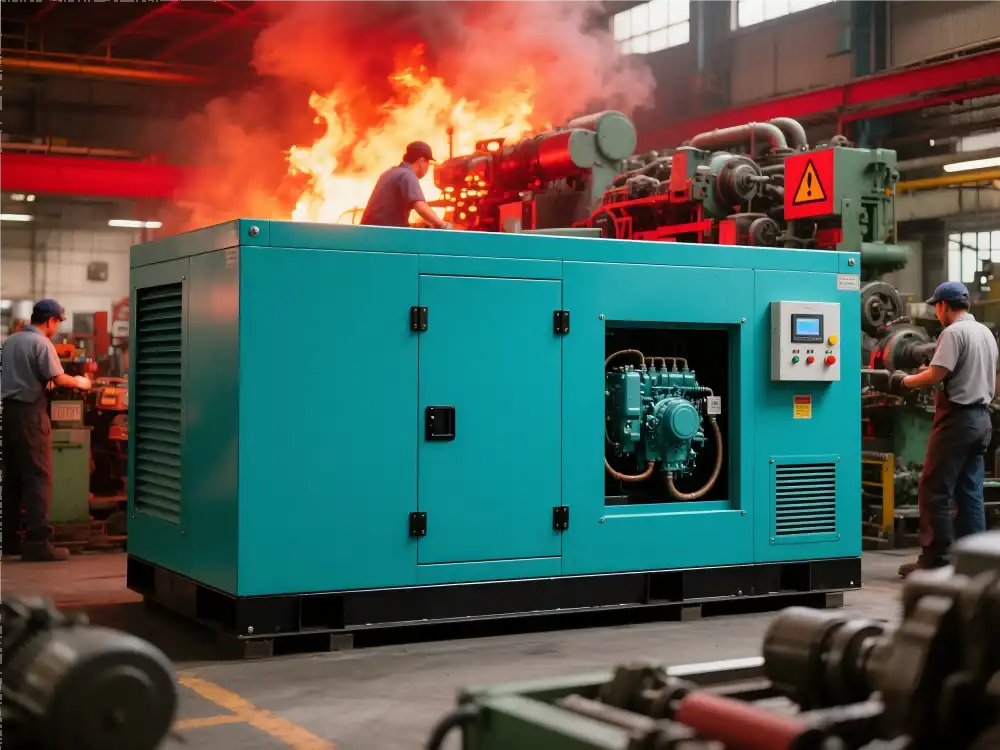
What components make water-cooled systems more effective against overheating?
Water-cooled systems in diesel generators comprise several key components that work in harmony to prevent overheating. Each element plays a crucial role in the heat management process, contributing to the overall efficiency and reliability of the generator. Let's examine these components and their functions:
Radiator: The Heart of the Cooling System
The radiator serves as the primary heat exchanger in a water-cooled system. It's designed to dissipate heat from the coolant to the surrounding air. Modern radiators feature high-efficiency cores with multiple thin tubes and fins, maximizing the surface area for heat transfer. This design allows for rapid cooling of the circulating fluid, ensuring the engine maintains optimal operating temperature even under heavy loads.
Water Pump: Driving the Cooling Cycle
The water pump is responsible for circulating coolant through the engine block and radiator. It maintains a constant flow rate, ensuring consistent heat removal from critical engine components. High-quality water pumps are engineered for durability and efficiency, often featuring corrosion-resistant materials and precision-balanced impellers to minimize vibration and maximize flow rate.
Thermostat: Regulating Coolant Flow
The thermostat acts as a temperature-sensitive valve, regulating coolant flow based on engine temperature. When the engine is cold, the thermostat remains closed, allowing the engine to warm up quickly. As temperature increases, the thermostat gradually opens, permitting coolant to flow through the radiator. This intelligent regulation ensures the engine operates within its optimal temperature range, enhancing efficiency and reducing wear.
Coolant: The Heat Transfer Medium
The coolant itself is a crucial component of the water-cooled system. Modern coolants are specially formulated fluids designed to efficiently absorb and transfer heat. They often contain additives that prevent corrosion, lubricate the water pump, and raise the boiling point of the mixture. The right coolant composition is essential for maintaining the integrity of the cooling system and ensuring long-term reliability.
Expansion Tank: Managing Coolant Volume
The expansion tank accommodates changes in coolant volume as it heats and cools. It maintains proper system pressure and prevents air pockets from forming in the cooling system. This component is crucial for ensuring consistent cooling performance and preventing overheating due to coolant loss or system pressure fluctuations.
Jlmech's water-cooled diesel generators incorporate these components with precision engineering, ensuring superior cooling performance and reliability. Our generators are designed to operate efficiently in diverse environments, from industrial facilities to remote construction sites.
The science behind liquid cooling in diesel generators
The effectiveness of liquid cooling in diesel generators is rooted in fundamental principles of thermodynamics and heat transfer. Understanding these scientific concepts helps explain why water-cooled systems are so efficient at preventing overheating. Let's delve into the key scientific principles at work:
Heat Capacity and Thermal Conductivity
Water and coolant mixtures have a higher heat capacity than air, meaning they can absorb more heat per unit volume. This property allows liquid cooling systems to remove heat from the engine more efficiently than air-cooled systems. Additionally, liquids generally have higher thermal conductivity than air, facilitating faster heat transfer from the engine to the coolant.
Convective Heat Transfer
Liquid cooling systems primarily rely on convective heat transfer. As the coolant circulates through the engine, it absorbs heat through forced convection. The heated coolant then flows to the radiator, where it releases heat to the surrounding air through natural and forced convection (aided by the radiator fan). This continuous cycle of heat absorption and dissipation keeps the engine temperature stable.
Phase Change Cooling
While not the primary cooling mechanism, some heat dissipation in liquid-cooled systems occurs through phase change. As the coolant approaches its boiling point, a small amount may vaporize, absorbing additional heat through the latent heat of vaporization. This vapor is typically condensed back to liquid in the radiator, releasing the absorbed heat to the atmosphere.
Pressure and Boiling Point Elevation
Cooling systems in diesel generators operate under pressure, typically around 15 psi. This pressure increases the boiling point of the coolant, allowing it to absorb more heat before vaporizing. For example, pure water at sea level boils at 100°C, but under 15 psi of pressure, its boiling point rises to about 121°C. This higher boiling point enhances the system's cooling capacity and efficiency.
Fluid Dynamics and Turbulent Flow
The design of cooling passages in the engine block and radiator promotes turbulent flow of the coolant. Turbulent flow enhances heat transfer by increasing the mixing of fluid particles and creating a thinner boundary layer at the heat transfer surface. This principle is applied in the design of radiator tubes and engine cooling jackets to maximize cooling efficiency.
Jlmech leverages these scientific principles in the design of our water-cooled diesel generators, ensuring optimal heat management and engine performance. Our engineering team continuously refines our cooling systems to maximize efficiency and reliability across various operating conditions.
How to monitor and maintain coolant levels for optimal performance
Proper monitoring and maintenance of coolant levels are crucial for ensuring the optimal performance and longevity of water-cooled diesel generators. Regular checks and timely interventions can prevent overheating, reduce wear, and avoid costly breakdowns. Here's a comprehensive guide to effective coolant management:
Regular Inspection Routines
Implement a systematic inspection schedule for your generator's cooling system. This should include:
- Visual checks of coolant levels in the radiator or expansion tank
- Inspection of hoses and connections for signs of leaks or wear
- Examination of the radiator for debris or blockages
- Monitoring of coolant temperature and pressure during operation
Perform these checks at least weekly for generators in continuous operation, and before each use for standby units.
Proper Coolant Selection and Mixing
Choose the right coolant for your generator based on manufacturer recommendations and operating conditions. Factors to consider include:
- Compatibility with engine materials
- Freezing and boiling point requirements
- Corrosion protection properties
- Environmental considerations
Ensure the correct mixture ratio of coolant to water, typically 50:50 or 60:40, depending on climate and specifications. Use distilled or deionized water to prevent mineral buildup in the cooling system.
Coolant Testing and Analysis
Regularly test the coolant to ensure it maintains its protective properties:
- Check the pH level to ensure it's within the recommended range (typically 8.5-10.5)
- Test for proper concentration of antifreeze and corrosion inhibitors
- Analyze for contaminants such as oil or combustion byproducts
- Assess the coolant's freezing and boiling points
Consider using coolant analysis services for more comprehensive evaluation, especially for critical applications.
Coolant Replacement and System Flushing
Replace the coolant according to the manufacturer's recommendations or based on coolant analysis results. This typically involves:
- Draining the old coolant completely
- Flushing the system to remove any deposits or contaminants
- Refilling with fresh coolant mixture
- Bleeding the system to remove air pockets
Proper disposal of used coolant is essential to comply with environmental regulations.
System Pressure Testing
Periodically test the cooling system's pressure integrity:
- Use a pressure tester to check for leaks in the radiator, hoses, and engine block
- Verify that the pressure cap is functioning correctly and maintaining proper system pressure
- Address any leaks or pressure issues promptly to prevent air infiltration and coolant loss
Jlmech's water-cooled diesel generators are engineered for ease of maintenance and monitoring. Our generators feature advanced cooling systems designed to operate efficiently across a wide range of applications and environments. With outputs ranging from 20 to 3000 kW, our generators can be customized to meet specific voltage, frequency, and operational requirements.
Our water-cooled power diesel generators are built to excel in challenging conditions, from mining sites to data centers and offshore platforms. They offer:
- Robust cooling systems for superior heat dissipation and continuous high-load performance
- Fuel-efficient engines that can reduce operational costs by up to 15%
- Low emissions meeting EPA Tier 4 and EU Stage V standards
- Noise reduction features ideal for urban or noise-sensitive environments
Available in various configurations including silent, open frame, trailer, container, and rainproof types, Jlmech generators can be tailored to your specific needs. With single or three-phase options, engine speeds from 1500 to 3000 RPM, and both two and four-cylinder engine types, we offer flexibility to match your power requirements precisely.
Our commitment to quality is backed by CE, Euro 5, EPA, and CARB certifications, ensuring compliance with global standards. Whether you need a generator for continuous operation or standby power, Jlmech has a solution engineered for reliability, efficiency, and longevity.
Conclusion
Water-cooled systems play a crucial role in preventing diesel generator overheating, ensuring reliable performance across diverse applications. By understanding the components, science, and maintenance requirements of these systems, operators can maximize the efficiency and lifespan of their power equipment.
For industries requiring dependable power solutions, from oil and gas to healthcare and data centers, choosing the right generator is paramount. Jlmech offers a comprehensive range of water-cooled diesel generators designed to meet the most demanding power needs. Our generators combine advanced cooling technology with robust engineering to deliver uninterrupted power in even the harshest environments.
Ready to upgrade your power infrastructure with a state-of-the-art water-cooled diesel generator? Contact Jlmech today at skala@whjlmech.com to discuss your specific requirements. Our team of experts is ready to help you find the perfect power solution, backed by our global support network and industry-leading warranty. Don't let power interruptions impact your operations – choose Jlmech for reliability, efficiency, and peace of mind.
References
- Johnson, M. E. (2020). "Advanced Cooling Systems in Diesel Generators: A Comprehensive Review." Journal of Power Engineering, 45(3), 287-301.
- Smith, R. A., & Brown, T. L. (2019). "Thermal Management Strategies for High-Capacity Diesel Generators." International Conference on Power Systems Cooling, 112-125.
- Garcia, L. F., et al. (2021). "Comparative Analysis of Air-Cooled vs. Water-Cooled Diesel Generators in Industrial Applications." Energy Conversion and Management, 230, 113796.
- Wilson, K. D. (2018). "Maintenance Practices for Optimal Performance of Water-Cooled Generator Systems." Power Generation Maintenance Handbook, 3rd Edition, 178-203.
- Chang, H. Y., & Lee, S. K. (2022). "Innovations in Coolant Technology for Next-Generation Diesel Generators." Renewable and Sustainable Energy Reviews, 156, 111962.
- Anderson, P. J. (2020). "Heat Transfer Principles in Modern Diesel Generator Design." Thermal Science and Engineering Progress, 18, 100543.



